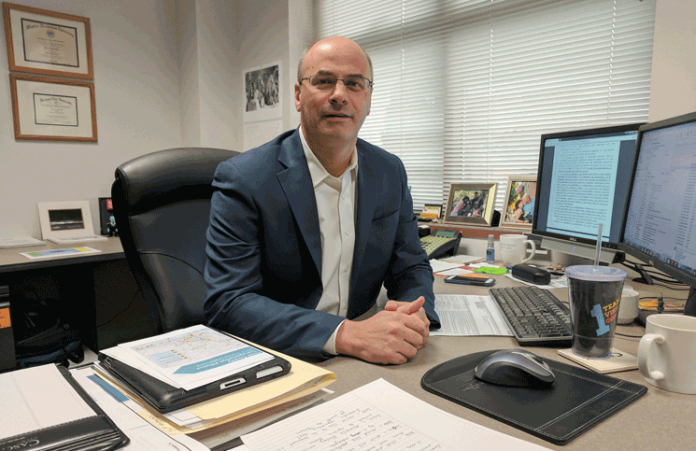At the end of December, the county’s fee waiver program, which had been in existence in one form or another since 2010, came to an end. At the same time, Clark County Board of Councilors Chair Marc Boldt sent a letter to several members of the area’s construction and economic development community, such as the Building Industry Association of Clark County, the Columbia River Economic Development Council, RSV Building Solutions, the Clark County Community Development department, and others. In the letter, Boldt asked the groups to select one or two members to join the Project Delivery Stakeholder Group – a task force called for by the Board’s resolution that ended the county’s fee waiver program.
According to that resolution, the group is to “study alternatives and make recommendations.”
“I hope to appoint and convene up to 12 people who will be charged with looking at the county’s financial, legal and permitting processes and requirements,” said the letter. “The goal is to better deliver commercial, industrial, office and residential projects to the greater Clark County community.”
Marty Snell, Clark County Community Development Director, said that when the Board decided to end the fee waiver program, it became clear that there were a number of things to consider other than what fees people get charged, such as the permitting process, legal standards and development standards.
“These are the big issues that affect delivering projects in the county,” said Snell.
Councilor Julie Olson said, “Throughout the last couple years, I heard from the building community that more important than the cost of fees and permits, is the timeliness and consistency of process. The building industry can identify some of their issues and propose solutions.”
Olson said that the group was going to meet in January, but the snow and ice delayed the meeting, which is now slated for the first week in February. Boldt’s letter stated that the group should be able to brainstorm and come up with a proposal in about six months.
According to Snell, the kickoff meeting will not only talk about what the group will address, but also what it will not address.
“For example,” said Snell, “We’ve gone around and around about stormwater. This topic would not be a good use of our time. Another looming issue is water and water rights in rural areas. We’ll have to decide what’s on the table and what’s off the table.”
Snell anticipates the group’s discussions centering around economic development, job creation and transportation improvements and funding for those – perhaps the group can suggest constructive ways for the county to work with the private sector in accelerating such projects. He cited the needed work on 179th St. and I-5, which could be as far out as 2022 or 2023 according to the Washington Department of Transportation’s schedule.
“Maybe we’ll want to move that up a couple years,” said Snell.
Jamie Howsley, the BIA’s government affairs director and a member of the new group, said that when the Board evaluated the fee waiver program in January 2016 (using an independent audit), they decided that the program as it existed was not sustainable (see the sidebar). Based on that experience, said Howsley, the Board is looking for guidance on, if a fee waiver program should exist, what should it look like? One option would be to adopt a program similar to the City of Vancouver’s fee waiver program, passed a little more than a year ago. The City’s fee waivers are intended to recruit larger corporations. If a project creates at least 50 new jobs in the city, the City will waive 50 percent of the project fees.
“From my personal standpoint, said Howsley, “if the program is going to be reconstituted it needs measurable objectives. I’m also interested in potentially looking at it from a land use basis – what else can we do to incentivize certain types of development activity and work more closely with the CREDC and their Strategic Plan?”
The Board, said Olson, is pro-economic development.
“We want to bring jobs here and create a vibrant and livable community,” she continued. “We are looking for ways we can be flexible to incentivize companies to locate here. There’s not always a one-size-fits-all approach. We need to create a ‘culture of yes.’”
A look back at the fee waiver program
When the fee waiver program was instituted in 2010, said Jamie Howsley, the BIA’s government affairs director, a project needed to create 15 new jobs in the county to qualify. Later, that number dropped to ten, and then eventually the waiver program was opened to any industrial or commercial project.
“The theory was that the [the waiver program] would generate a lot of new business activity, which would create sales and property tax revenue that would offset the fees,” said Howsley.
But when the county evaluated the program, it turned out that there was limited success in job creation or revenue generation. Instead, fees were being waived for tenant improvements, fueling stations and other land uses that did not necessarily create jobs or create substantial revenue.
“We saw gaping holes in transportation impact fees, resulting in a lower level of service on roads,” Howsley said.
Another problem with the fee waiver program that sunsetted in December was that homebuilders felt that the high growth in residential construction was subsidizing community development.
“Where the rubber hit the road is that not only were the homebuilders the only ones paying fees, but there was a sense that levels of service of were declining – it was a double-edged sword for the construction industry,” concluded Howsley.




